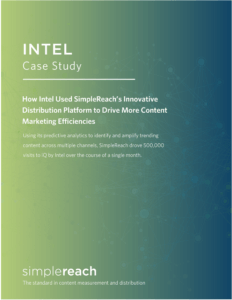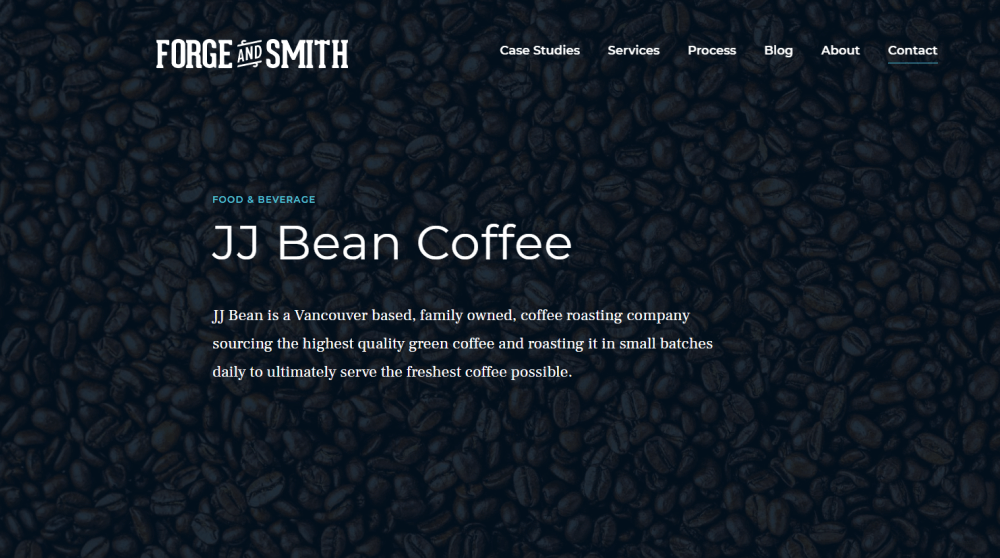
9 Keys to Killer Case Studies — With Examples
Everybody knows that writing case studies can be a great way to nurture a buyer toward purchasing your product or service. But not everyone knows how to write a case study that actually delivers on that promise.
When done well, case studies are an incredibly effective marketing tool, because they combine three of the most powerful marketing tactics into one:
Storytelling. Humans are wired for story. We crave it and we’re moved by it. It’s how we make sense of our world. Storytelling connects us, creates empathy, and stirs our emotions. We learn from stories and they lead us to action.
Social proof. Social proof is the force behind a million customers who can’t be wrong, 9 out of ten dentists who recommend your toothpaste, or “billions and billions served.” If everyone else is doing it and getting the results I want, it must be the right choice.
Proven results. You can’t argue with proven results, right? Case studies show that real customers are seeing real success — you aren’t just making a bunch of promises.
Case studies are also highly versatile. You can deliver them in print or digitally. Use them early in the buyer’s journey or farther down the sales funnel. Make them short or long. Publish them as a standalone or as part of a larger piece of collateral. And so on.
But there are powerful case studies, and there are meh case studies. Make sure yours pack a punch by following these 9 keys to creating an effective case study.
1) Don’t Make It About You
Here’s a weird thing about your company’s case studies: people don’t read them to find out why you’re the best thing since Betty White. They read case studies because they want to know how other people have solved the same problems they’re facing.
They want to know about your customers, not you.
A case study is by definition a story about your customer. You’re sharing their journey from struggle to success. And while your company has an important role in that story, your customer should take center stage.
I know what you’re thinking: How are we supposed to sell our product-slash-service if our own case study isn’t about us?
Use the Force.
Star Wars is a story about a whiny kid who saves the day. It’s his story — he’s the hero on the journey. But how did he save the day? He used the Force. Star Wars is all about Luke, but Luke couldn’t have been successful without the Force.
By now you’re probably connecting the dots, but I’ll be obvious anyway: your customer is Luke and your company is the Force. And your case study is the movie script. (I don’t know who your director is, but it isn’t George Lucas.)
Check out this customer story from EOS.
2) Get Emotional
A case study is a story. It includes a problem, a threat of risk, and a satisfying resolution. That’s all the makings of a great drama. If your case studies don’t draw readers in and engage their emotions, you’re doing it wrong.
Don’t inflate the drama for drama’s sake, but don’t leave it on the cutting room floor, either. Especially if your business is in a boring industry. Your industry may be boring — you should never be!
People make buying decisions based on emotion, even in B2B scenarios. Leave out the emotion and you could lose customers.
Here’s a case study that hits all the emotional triggers.
3) Include Hard Numbers
People make decisions based on emotions, but they justify those decisions with logic and numbers. Stats and figures add specificity and legitimacy to your claims — you aren’t just blowing smoke up their chimney. And they paint a clear picture of the kind of success your buyers can expect with your company.
Numbers mean ROI and bottom line benefits. And they have even greater impact when you display them with attractive visualizations, because they can literally see the difference.
SimpleReach tells a great story with numbers in this case study.
4) Make Much of Your Customer
Ever know a person who was quick to praise others and take every opportunity to speak highly of them? How did that affect your opinion of the complementer?
Everyone wants to be associated with people who lift others up. It’s incredibly attractive, and it instantly builds trust and rapport. Likewise, buyers want to be associated with companies that are fans of their customers. It shows more than just appreciation, but a genuine delight in the people who are handing over their hard-earned dollars.
Your case studies should show a genuine enthusiasm for your customer, but it should be a natural enthusiasm. Don’t go overboard with it or it’ll just be cringey.
5) Use Appealing Visuals
Chances are, your sales reps are the best-dressed people in your company — at least, when they meet with a major prospect. You’d never send them out to a client, dressed like The Dude (The Big Lebowski) or Herb Tarlek (WKRP in Cincinnati). Why? Because they represent your company. The way they look speaks volumes about your business.
The same is true for any kind of marketing collateral you send out into the world. Your case study shouldn’t simply look not-ugly — it should be stunning.
Before your audience reads a single word, your case study will have already told them who you are. Make sure it’s the right message.
This case study by Taboola is just plain gorgeous.
6) Craft a Compelling Title
We all know you shouldn’t judge a book by its cover, but guess what? We all judge a book by its cover. Same is true for titles. If your case study’s title doesn’t hit the right notes, you’ll have a harder time getting eyeballs on it.
Your case study title should be specific enough that readers will know what to expect. It should be intriguing enough that they won’t be able to resist it, but it shouldn’t sound like clickbait.
Writing a good title isn’t easy, but it’s absolutely necessary. Take the time you need, and don’t settle for just good enough. You really will see better results.
Here’s a great article on crafting powerful titles.
7) Draw Outside the Lines
Who says your case study should be a two-page document with text and data visuals? Sheesh, everybody does that. Why not make your story stand out a bit more? Try some of these creative approaches:
- Record it as a video
- Publish it as an interactive web page
- Make it a short comic book in PDF format
- Create it as a SlideShare story
- Write it as a narrative, like a short story
- Podcast it!
- Post on LinkedIn Stories or Instagram Stories
A word of warning: never do anything just because it’s different or cool-looking. Make sure the approach you use aligns with your brand, your goals, your target audience, and the way your audience will want to use your content.
8) Include a Call to Action
So your buyer downloads your case study. They read it and love it. It resonates with them and they can see the value that you provide. Woo hoo!
*Record scratches*
Not so fast, McGraw. Your buyer just went online and Googled your type of service. One of your competitors popped up and they went to that site instead of yours.
Ouch.
What happened? It’s not an SEO problem. You could have avoided the bounce without investing into SEO. All you needed was a call to action (CTA).
A call to action leads your buyer to take the next step. They don’t have to think about it, they don’t have to go to Google — it’s just right there for them. But if you don’t tell them what to do next, they won’t do it.
A good CTA is:
- Attention-grabbing
- Attractive
- Clear
- Action-oriented
- Irresistible
- Easy to do
The CTA should also lead your buyer to the next logical step in their relationship with you. What makes sense at this point in the buying process? A whitepaper? A demo request? A related on-demand webinar? Whatever it is, make it easy for them to do it. Otherwise, there’s no guarantee they ever interact with your company again.
Forge and Smith created this case study with a clear and compelling CTA.
9) Give It Away for Free
A lot of companies use case studies as a lead generation tool. You offer the content, in exchange for an email address. This helps build your email database, and it gives your new lead some helpful and valuable information.
Except when it doesn’t work.
Two things are at work against you these days:
- With all the privacy concerns related to marketing and internet security, people are more reluctant to give out their personal information than ever.
- Everyone is asking your audience for their email address, and they’re sick of it.
Studies show that you can actually see better results when you don’t gate your content. Make your case studies completely free and immediately accessible. It’ll increase your downloads and enhance your company’s image.
Start Writing Better Case Studies
In the end, the secret to an effective case study is simply this: write a customer story that’s about your customers and not you. Make it visually and narratively compelling, and fortify it with hard numbers. And don’t forget to lead your readers to the next step.




